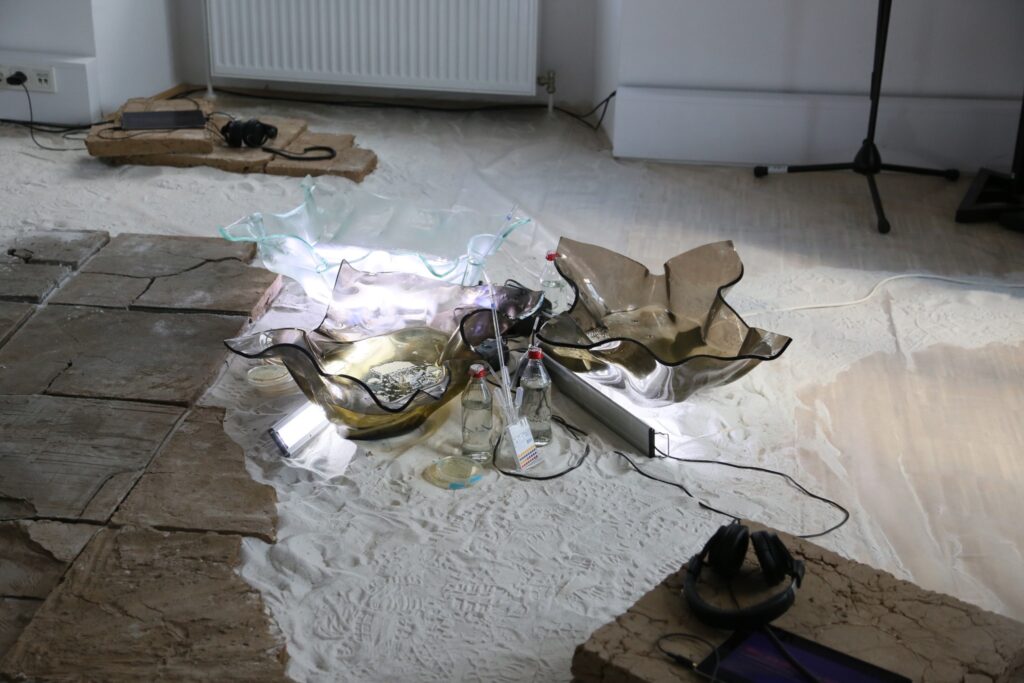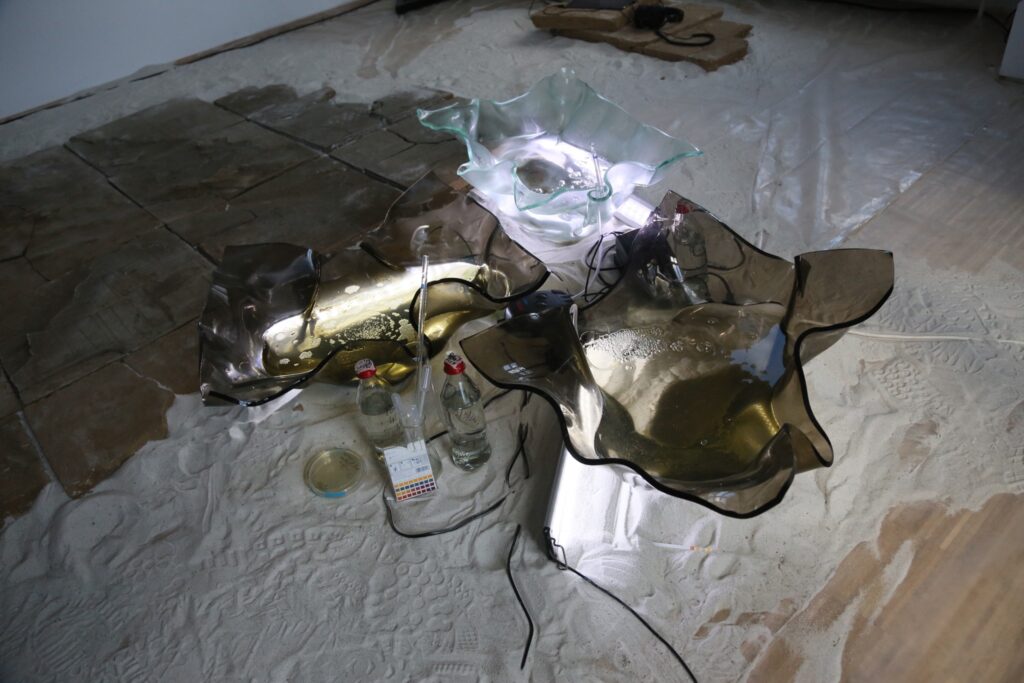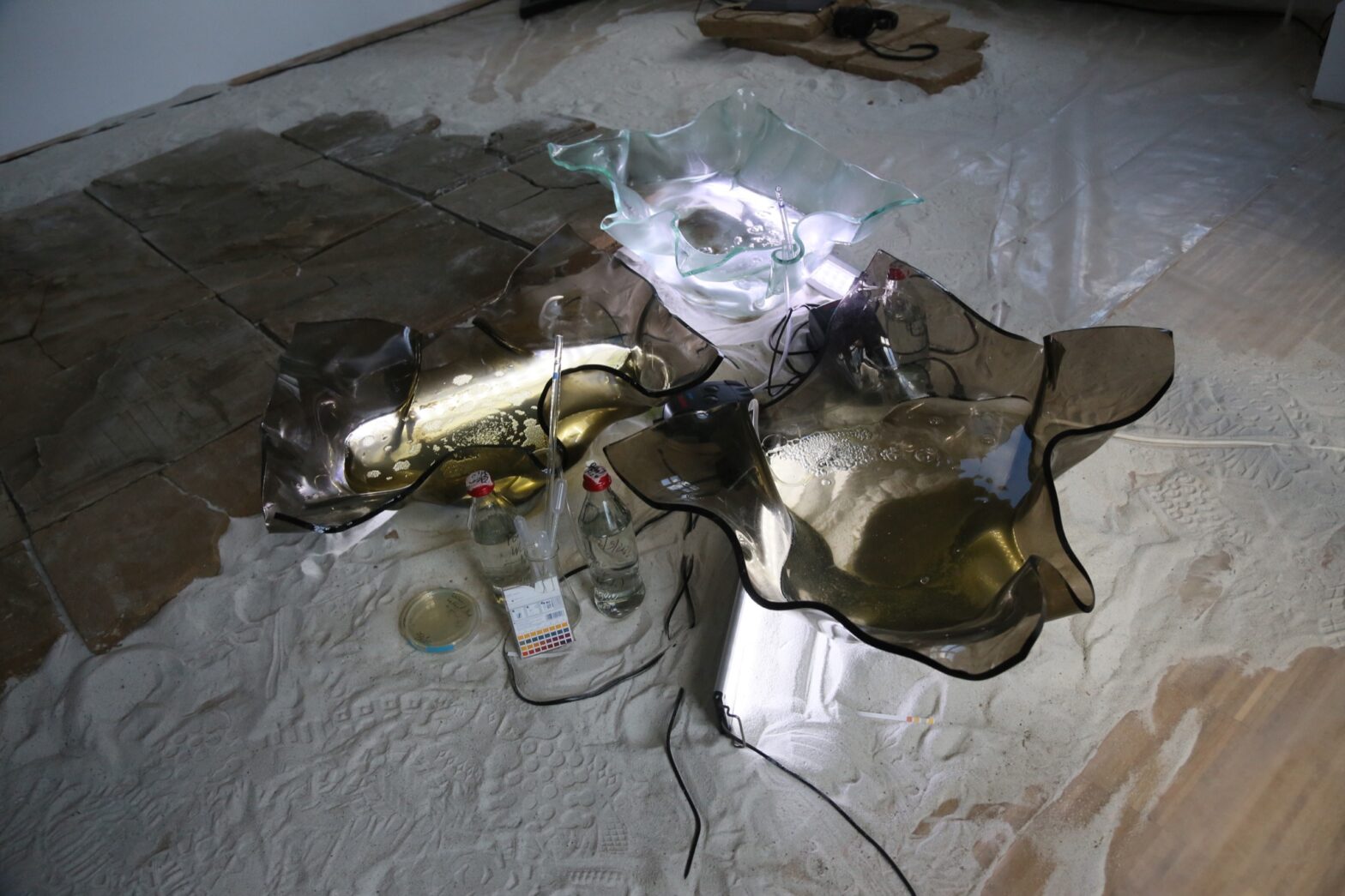Klaus Fritze Herbst
Water quality is a key environmental parameter for aquatic ecosystems. In this experiment, water from the Danube in Linz is compared with samples from the Weimar Wetland Pond. A mixture of spring water (Volvic) and a soil decoction serves as a positive control.
Experimental setup: Three small glass containers (provided by Mindaugas Gapševičius) filled with different amounts of water are filled with defined volumes of the respective samples. Each container contains water fleas1 from a breeding colony. To improve living conditions, the tanks are aerated, fed with microalgae, and illuminated with LEDs. This allows visitors to observe the vitality of the daphnia.
Repeatable and practical: Daphnia respond even to small amounts of pollutants. The experiment offers a simple vitality comparison instead of expensive chemical analyses and reflects overall nutrient and pollutant levels. Differences between two ponds help in making quick decisions on protective measures.
Limitations: Environmental variations (season, temperature, daily fluctuations) can influence results. Not all pollutants can be detected with daphnia. Standardized protocols and repetitions are necessary.
Related Media

Experiment: Daphnia Test. Photo: Cosmo Schüppel

Experiment: Daphnia Test. Photo: Cosmo Schüppel
